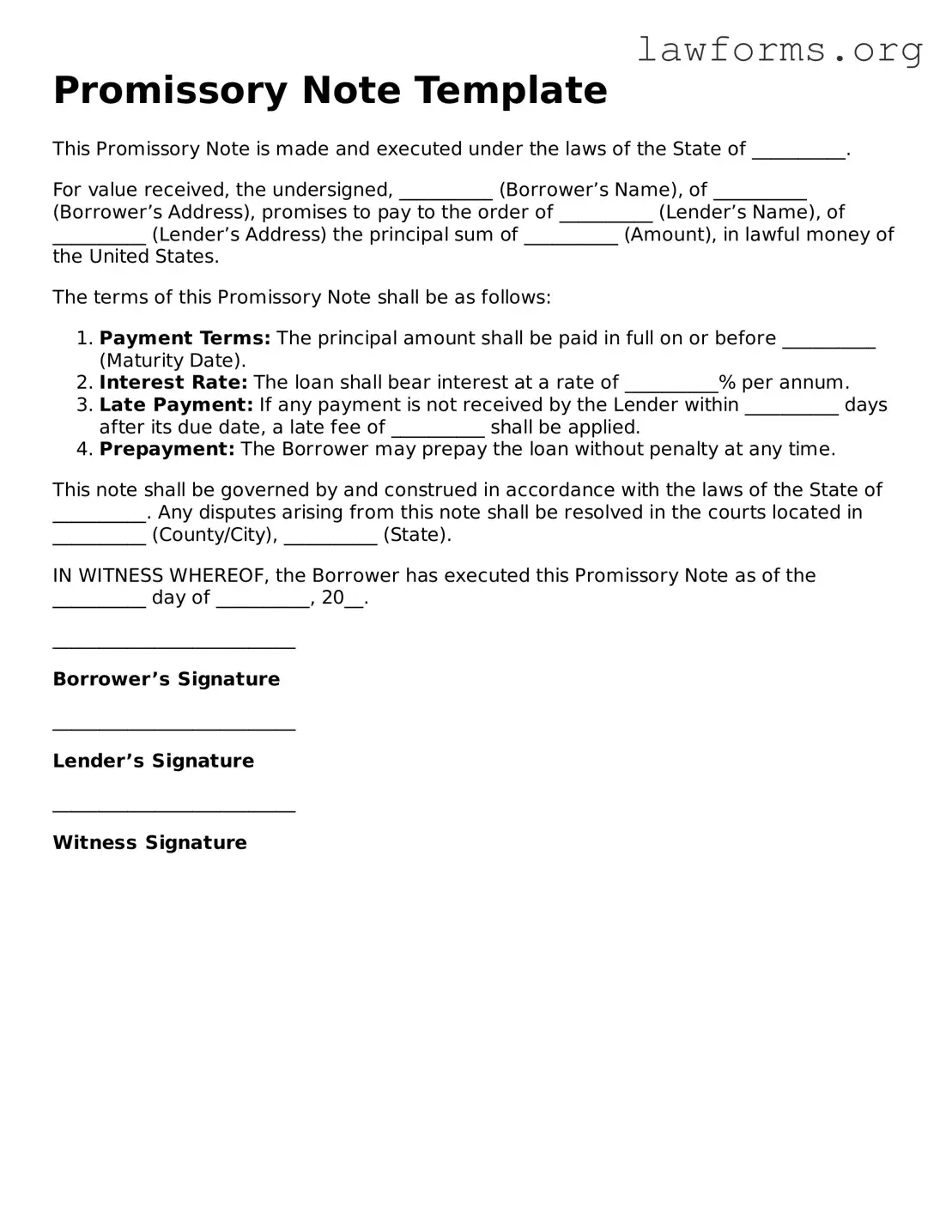Promissory Note Template
This Promissory Note is made and executed under the laws of the State of __________.
For value received, the undersigned, __________ (Borrower’s Name), of __________ (Borrower’s Address), promises to pay to the order of __________ (Lender’s Name), of __________ (Lender’s Address) the principal sum of __________ (Amount), in lawful money of the United States.
The terms of this Promissory Note shall be as follows:
- Payment Terms: The principal amount shall be paid in full on or before __________ (Maturity Date).
- Interest Rate: The loan shall bear interest at a rate of __________% per annum.
- Late Payment: If any payment is not received by the Lender within __________ days after its due date, a late fee of __________ shall be applied.
- Prepayment: The Borrower may prepay the loan without penalty at any time.
This note shall be governed by and construed in accordance with the laws of the State of __________. Any disputes arising from this note shall be resolved in the courts located in __________ (County/City), __________ (State).
IN WITNESS WHEREOF, the Borrower has executed this Promissory Note as of the __________ day of __________, 20__.
__________________________
Borrower’s Signature
__________________________
Lender’s Signature
__________________________
Witness Signature
